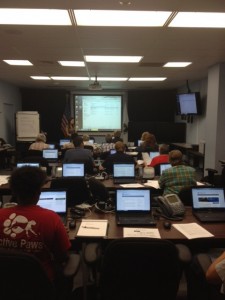One of the “lessons learned” from Sandy and from every other response that we’ve had over these last few years is that there is no such thing as having too many volunteers.
With any particular event, only a fraction of our overall volunteer base will actually be available to assist. People have to work, they have their own families/homes/pets to care for or they have other life events which may require their attention during the time of a potential response.
The need for more volunteers becomes even more of an issue as there is greater awareness of the need for animal sheltering in disaster situations. In NY, the mayor actually declared that ALL shelters that opened within the city, would take in animals.
The more shelters, the greater the need for volunteers.
So, while the images from Sandy are still fresh in our minds, this is a great opportunity to add to our volunteer base.
If you know of anyone who might be interested in becoming a SMART volunteer, please refer them to our website: www.smartma.org for information on how to do so.

